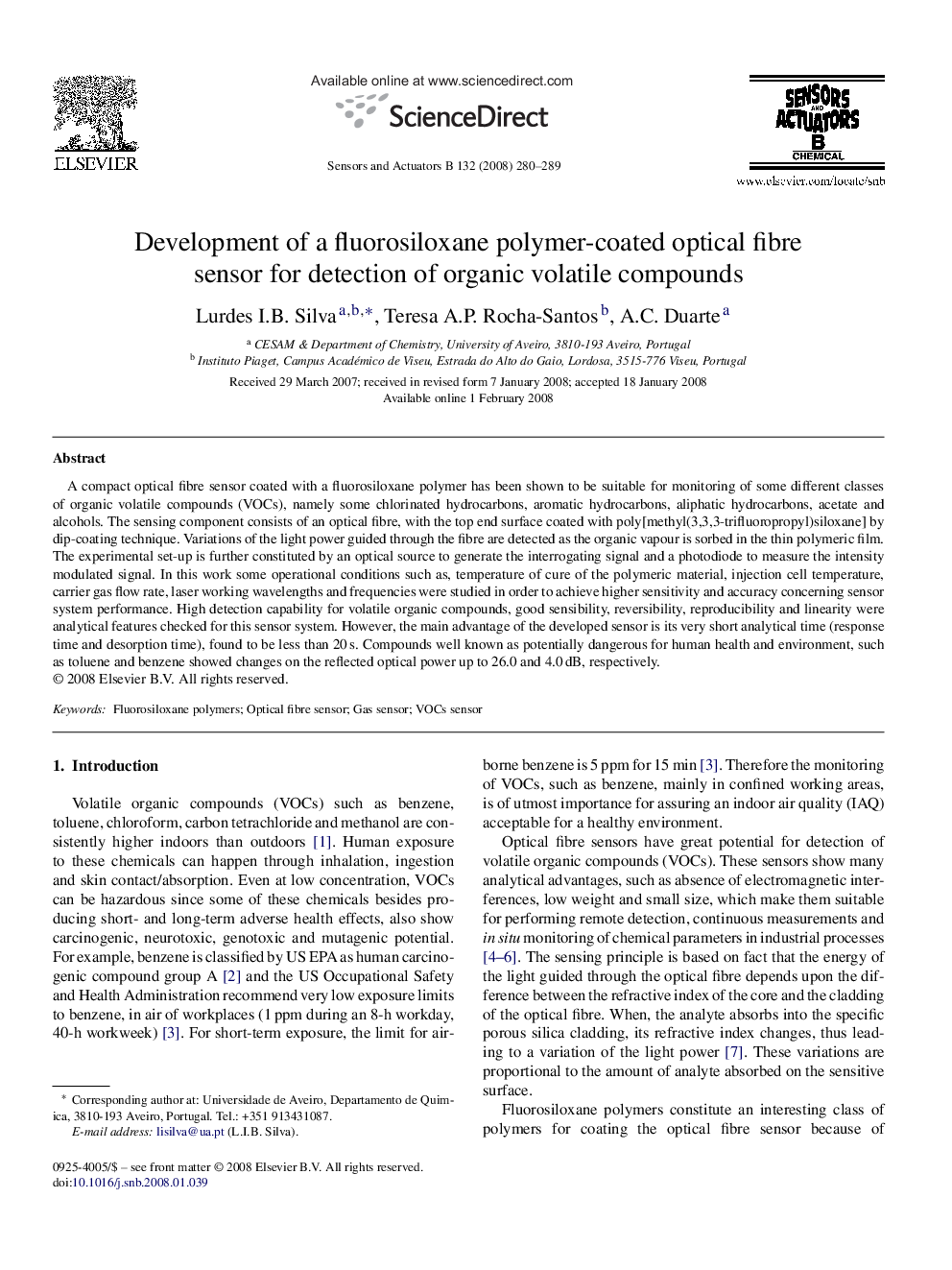| Article ID | Journal | Published Year | Pages | File Type |
|---|---|---|---|---|
| 741417 | Sensors and Actuators B: Chemical | 2008 | 10 Pages |
A compact optical fibre sensor coated with a fluorosiloxane polymer has been shown to be suitable for monitoring of some different classes of organic volatile compounds (VOCs), namely some chlorinated hydrocarbons, aromatic hydrocarbons, aliphatic hydrocarbons, acetate and alcohols. The sensing component consists of an optical fibre, with the top end surface coated with poly[methyl(3,3,3-trifluoropropyl)siloxane] by dip-coating technique. Variations of the light power guided through the fibre are detected as the organic vapour is sorbed in the thin polymeric film. The experimental set-up is further constituted by an optical source to generate the interrogating signal and a photodiode to measure the intensity modulated signal. In this work some operational conditions such as, temperature of cure of the polymeric material, injection cell temperature, carrier gas flow rate, laser working wavelengths and frequencies were studied in order to achieve higher sensitivity and accuracy concerning sensor system performance. High detection capability for volatile organic compounds, good sensibility, reversibility, reproducibility and linearity were analytical features checked for this sensor system. However, the main advantage of the developed sensor is its very short analytical time (response time and desorption time), found to be less than 20 s. Compounds well known as potentially dangerous for human health and environment, such as toluene and benzene showed changes on the reflected optical power up to 26.0 and 4.0 dB, respectively.
